
Cork substrate under laminate: characteristics, choice and laying Floors,Building materials
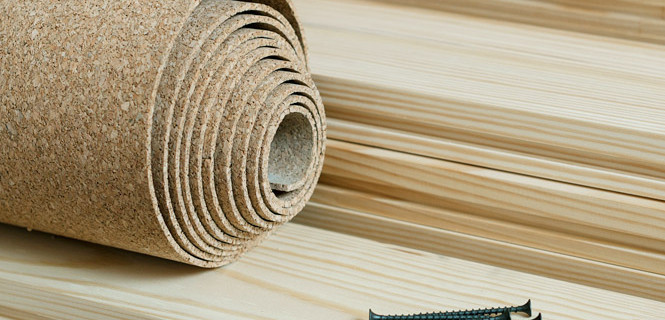
To create a beautiful and interesting interior, many when finishing the floor give preference to an environmentally friendly and attractive laminate. Its dignity is difficult to overestimate, but you can only feel them only if you competently assemble the floor design. In this case, the substrate is certainly necessary, which gives an aligning, deprecizing the effect, increases the moisture resistance of the wood and improves the thermal insulation quality of the material, prevents the tapeling and the appearance of noise from shocks when walking. One of the most popular options is a cork substrate for laminate, with all properties, pluses and minuses, as well as laying technology, you will read this article.
Content
Cork - material production
The base of the cork substrate is a fine bark of oak. In the process of manufacturing a roll coating, all particles are pressed under pressure. The adhesion is achieved without the use of chemical adhesive binders - this function performs the natural suberin highlighted by the wood itself.
Important! Thanks to such characteristics, it can be safely said that the cork substrate under the laminate fully complies with the current trends of construction. They consist in the maximum environmental purity and naturalness of materials at high strength characteristics.
Technical data Tubes
Before buying a cork substrate for a laminate, be sure to specify the characteristics of the material offered to you. So you can be sure that he is high-quality, will perform its functional purpose and will last long.
The main important parameters are:
- thermal conductivity - maximum 0.043 W / MK;
- fire resistance - standard C-209 class, which characterizes very bad burning;
- density - within 220-260 kg / m3 ;
- noise absorption (coefficient) - 0.85;
- basin strength - 2 kg / cm2 ;
- humidity - no more than 7%.
Important! Such material is available mainly in rolls. Length may vary from 5 m, width - from 100 cm, respectively - the price of a cork substrate under the laminate will change. Another variable parameter is the thickness of the cork substrate under the laminate (the range is 1-5 mm). About how to determine suitable in your case, you will learn below.
Cork substrate - for and against
After reading the characteristics of the cork substrate, we can conclude that this material has such advantages:
- High density with a slightly specific weight.
- Excellent heat and noise insulation characteristics.
- Resistance to deformation.
- Easy styling, as well as transportation, due to parameters and ease of weight.
- Environmental purity.
- Long service life at high wear resistance.
- Absolute security and due to component composition and thanks to good fire resistance.
- Provides comfort when walking without unnecessary acoustic effects.
- Provides good air circulation, which is necessary for a pleasant indoor microclimate.
- Reduces the vibration of the coating when the items fall on the floor.
- Protects laminate locks from clusters in them dust, dirt.
Important! Only one nuance can be attributed to the disadvantages - a relatively high price compared to other materials of this group. But, given that it is possible to buy a cork substrate for a laminate once for a long time, without the need for periodic repairs, such a value accurately pays off.
Types of cork substrate
In the building materials market, you will find 3 types of cork substrate:
- Normal. The easiest and cheapest option from the whole group. It has all the advantages that are listed above, but its weak place is an exposure to the harmful effect of moisture.
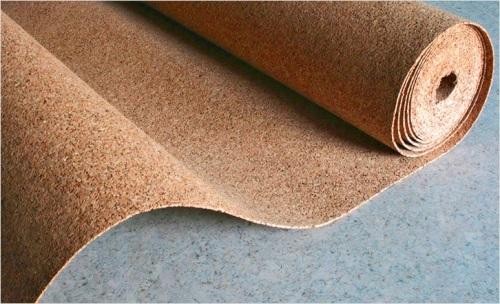
- Bitumen-cork. The basis of this material is dense paper type of cardboard. One side is processed by bitumen, the second - extruded plug. As a result, a multilayer structure is formed. The advantages of this modification of the cork substrate is that there is no need for waterproofing work in the process of laying the laminate, plus the emission appears during operation during operation. The cork layer in this case rotates down - directly to the base of the floor. The disadvantage - if you buy material from an unreliable manufacturer, the structure of the web can incuse over time.
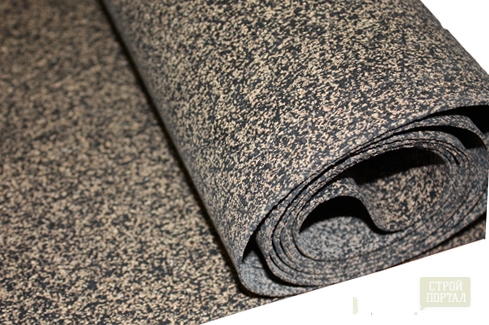
- Rubber-cork. The principle of manufacturing this type of material is the same as the conventional substrate, only the mixture is added in the mixture. Small rubber grains are added. As a result, a monolithic canvas is formed. Due to this, noise and moisture insulation properties increase. Disadvantages - this is: too high the price of a cork substrate under a laminate, which does not justify its use in the conditions of residential premises, and the presence of synthetic substances in the component composition, although harmless.
Important! What exactly to the substrate you prefer - to solve you. But rationally go to this issue, because it does not make sense to overpay for a more expensive kind of substrate if there is a stable microclimate in your room with humidity and temperature indicators within the standard standards.
Applying cork under laminate
Before laying a cork substrate under a laminate in the desired room, note that experts recommend to do it only in:
- bedrooms;
- corridors;
- office rooms with different intensity of walking.
Important! Regarding rooms with high humidity - kitchen, bathroom, etc., there are limitations. The plug can be used, but, since it is based on wood, it will last less due to exposure to the influence of moisture. The exceptions are combined varieties - a rubber-cork and bitumen-cork substrate. In principle, the laminate itself is not recommended for such premises, so you can hardly have to face such a dilemma.
Laying cork substrate under laminate
Direct installation technology is very simple and accessible to any home master. But before laying a cork substrate under the laminate, you will have to solve such tasks:
- Select the thickness of the substrate.
- Prepare the basis and material itself.
Suitable substrate thickness from cork under laminate
There is a commodity opinion that the thicker the substrate is the better. Such an approval is devoid of common sense and understanding the characteristics of some materials. So, with respect to the cork substrate under the laminate, such a rule is not applicable at all for such reasons:
- The strong curvature of the base surface cannot be aligned with the substrate - still have to make the fill with special leveling mixtures, otherwise there will be a breakdown when laying a laminate.
- The large thickness of the substrate can lead to the formation of dents, in also deformation, the provisions of the laminate panels, especially in those places that are subjected to a stable intensive load.
- With the wrong choice of the thickness of the cork substrate under the laminate, the locking fastenings of the panels of the decorative material itself are faster.
Important! To prevent such problems, consider the recommendations of the professionals and select a cork substrate for a 2 mm laminate if the gender is perfectly smooth, or a cork substrate under a 3-4 mm thick laminate, if there are small flaws.
Preparatory work
With the works of this stage, you will also cope with yourself if you adhere to the following sequence:
- Check for the construction level of grounding grounds.
- Prepare a self-leveling solution and fill it over the entire surface, if there are deviations at a height of more than 3 mm.
- Sharpen all the grooves if defects can be seen by small forces.
- Make the technical pause until the mixture is complete.
- Sproute the floor with anti-grapple antiseptic solution.
- Wait for it to absorb and dry.
- Remove the whole garbage, dust in the room where laminate laying is planned.
- Enter a cork substrate into this room, unpack all the packs and leave in the unfolded form at least 1 day. This procedure is needed so that the wood material is used to new conditions and acquired the original form.
Technology laying cork substrate under laminate
- Defend exactly the direction of laying the laminate itself. Substrate strips Place in perpendicular direction.
- Make a waterproofing layer from any material suitable for this purpose.
- If you have chosen the cheapest and simple option - polyethylene film, act like this:
- Cut the web with bands by selecting the correct dimensions of each individual item.
- The optimal length of the bands is equal to the length of the room plus a gap of 3 cm.
- Place the polyethylene strip in one direction so that on each side the material came on the walls of 1.5 cm.
- Hold the nestling stripes at 10-12 cm.
- Clean all the joints with a tape or adhesive tape.
- Cover the strips of the appropriate size from the cork substrate - the length should be 2 cm less than the length of the room.
- Put the plug sheets in such a way that on each side it was an indentation from the wall of 1 cm, and there was no adhesion between the layers, that is, jack.
- Secure the construction tape - take a ribbon of 60 mm wide for this.
- Treat the plug surface by moisture-repellent solution.
Important! Do not lay the plug in 2 layers. It will not help increase technical indicators, but the wear of the material will be much faster from this.
Cork substrate under laminate - video
To understand what is the difference between cork and other substrates for laminate, and also to learn how much each type of material can cost, look at the video below. In it you will find an overview of modern building materials with comparing characteristics and specific prices.
Conclusion
As you have already seen a cork substrate - the perfect version of the laminate, if you strive to get a beautiful, reliable and durable result.
New comments
Add a comment
To send a comment you need authorize.




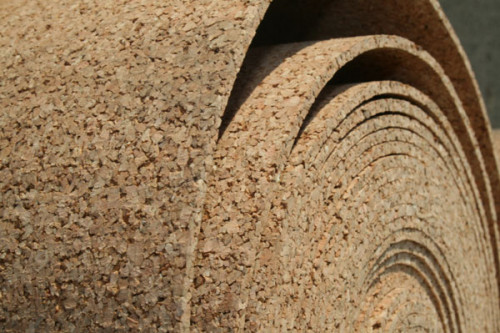
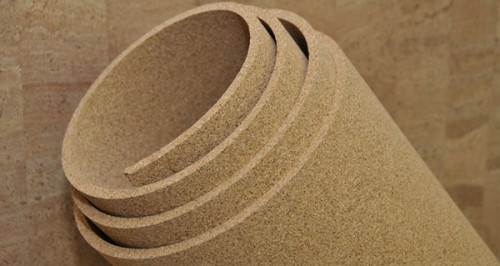
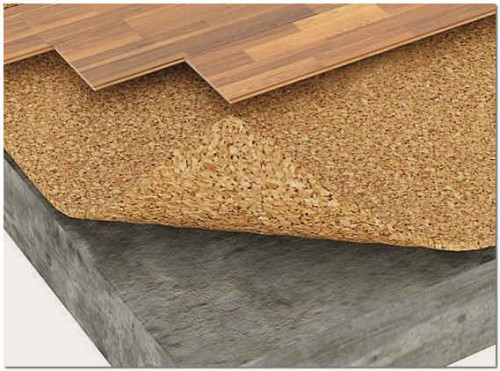
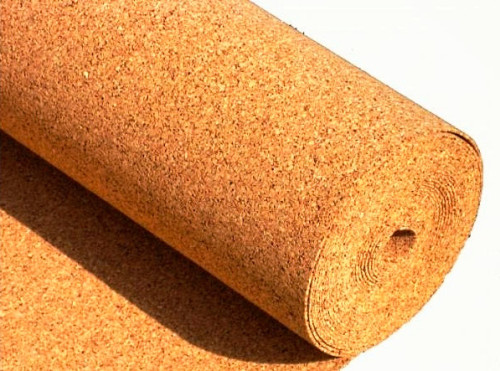
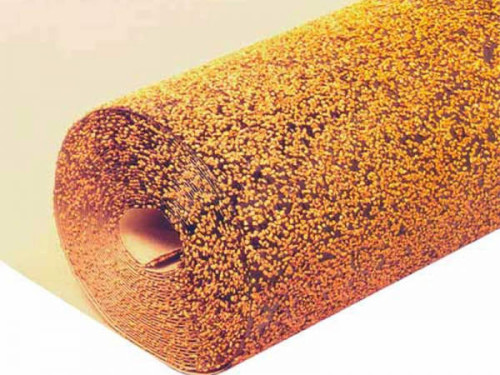
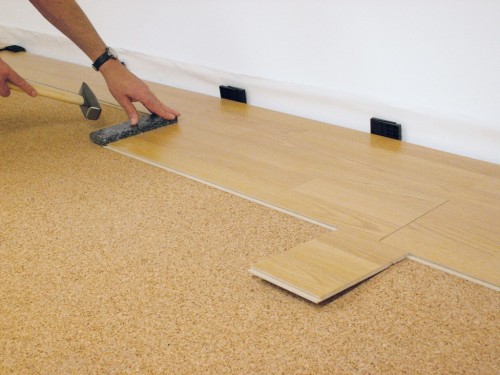
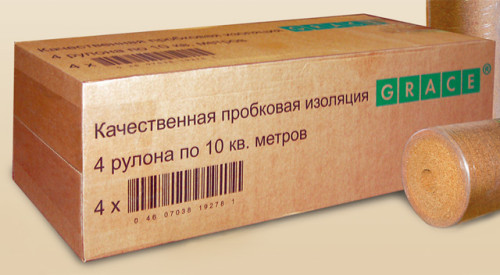
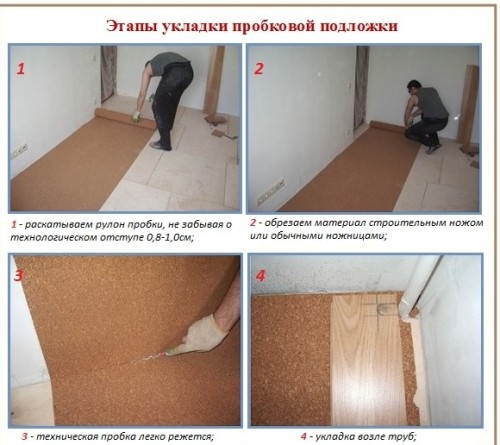
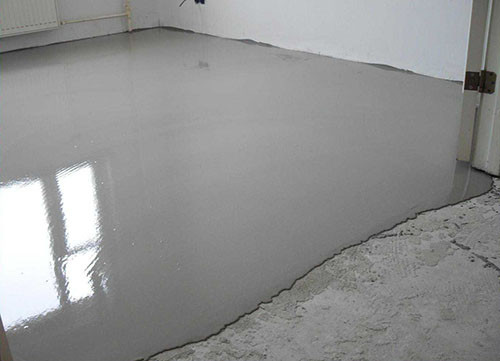
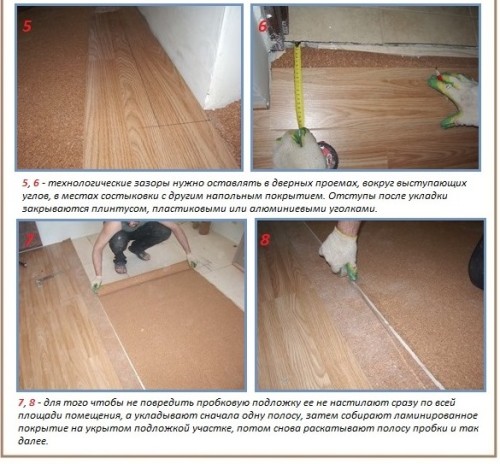















Thank you for the article. You write that the substrate should be placed perpendicular to the laminate / parquet board, and on the illustrations shown along. How correct?